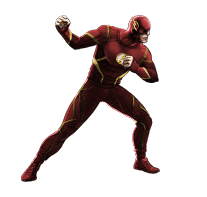
Sonic charge effect sprite how to#
The included documentation has a section dedicated to describing how to properly use bloom such that you will have total control over what glows in your scene, and how the proper workflow combined with this shader completely eliminates ugly bloom. Adding a masking system would cost additional resources to address a problem that using a proper bloom in the proper way already does. If you look closely at the demo scene, the icosahedrons themselves basically emit no glow whatsoever (the non-glowing glossy black ones). Since HDR rendering can handle this range of colors, there should be no need for masking, because bloom will be unnoticeable for any colors that are below "white". The main emissive cube's glowing parts get thousands of times brighter than the surrounding icosahedrons. The "glowing" objects are many times brighter than "white" at the current exposure level. I know that the demo scene isn't the best example of a typical game environment, but consider the following things. With the way this effect works, combined with the use of the included "super-bright" emission shader, getting only certain objects to glow should be no problem without the need for a masking system. It is always operating on all pixels, regardless of brightness, but by the nature of how it works, it is only noticeable when very bright pixels (much higher than surrounding pixels) are within your scene to spread their energy to other pixels.Ĭlick to expand.Only objects that are many times brighter than surrounding objects (or "white" on your monitor at your current exposure level) will cause visible bloom/lens dirt. Each pixel loses a bit of its own energy, and gains a bit of surrounding pixels' energy. This is how this bloom shader works, and pretty much how bloom works in cameras and in the human eye. In a scenario like this, any pixels nearby this bright cluster can obtain an additional luminosity of 20 (2% of 1000), which is a very large increase (20x brighter than "white") and should be quite noticeable. Now, suppose in the center of this scene, we add some very bright pixels that have a luminosity of 1000. This will probably be nearly unnoticeable in a scene where its pixels' luminosity are within a range of 0 to 1, because a pixel can only gain a maximum of 0.02 luminosity from its neighbors in this scenario. Let's say that each pixel loses 2% of its own luminosity and gains 2% of nearby surrounding pixels' luminosity. We'll consider 0 to be "black", and 1 to be "white" on your display/monitor. Imagine a scene wherein all input pixels' luminosity (brightness) are between 0 and 1. In a way, each pixel loses a bit of its own energy and obtains a bit of the surrounding pixels' energy.

This effect simply "spreads" the input scene's color. It can be difficult to explain, but I'll try to explain it this way. This effect is energy-conserving, thus, you won't see lens dirt or bloom where there aren't sufficiently bright pixels in view.Ĭlick to expand.Neither. This asset includes 16 high-quality lens dirt textures that specify how light is scattered on the surface of the lens and includes emissive and particle shaders that help emit very bright light for creating brilliant highlights in your game. You would have to stack at least 6 default Unity bloom effects to get a similar and still inferior approximation. The best part? The rendering cost is less than the cost of 2 default Unity bloom effects. This image effect makes bright objects stand out in your game by producing very large and perfectly smooth highlights. SENBDL is bloom done right-no threshold or brightpass.
Sonic charge effect sprite pro#
Sonic Ether's Natural Bloom Dirty Lens is an image effect for Unity Pro that simulates subsurface scattering of light inside of a lens and renders a per-pixel dirty lens effect. I have depreciated this project and made it open-source.


 0 kommentar(er)
0 kommentar(er)
